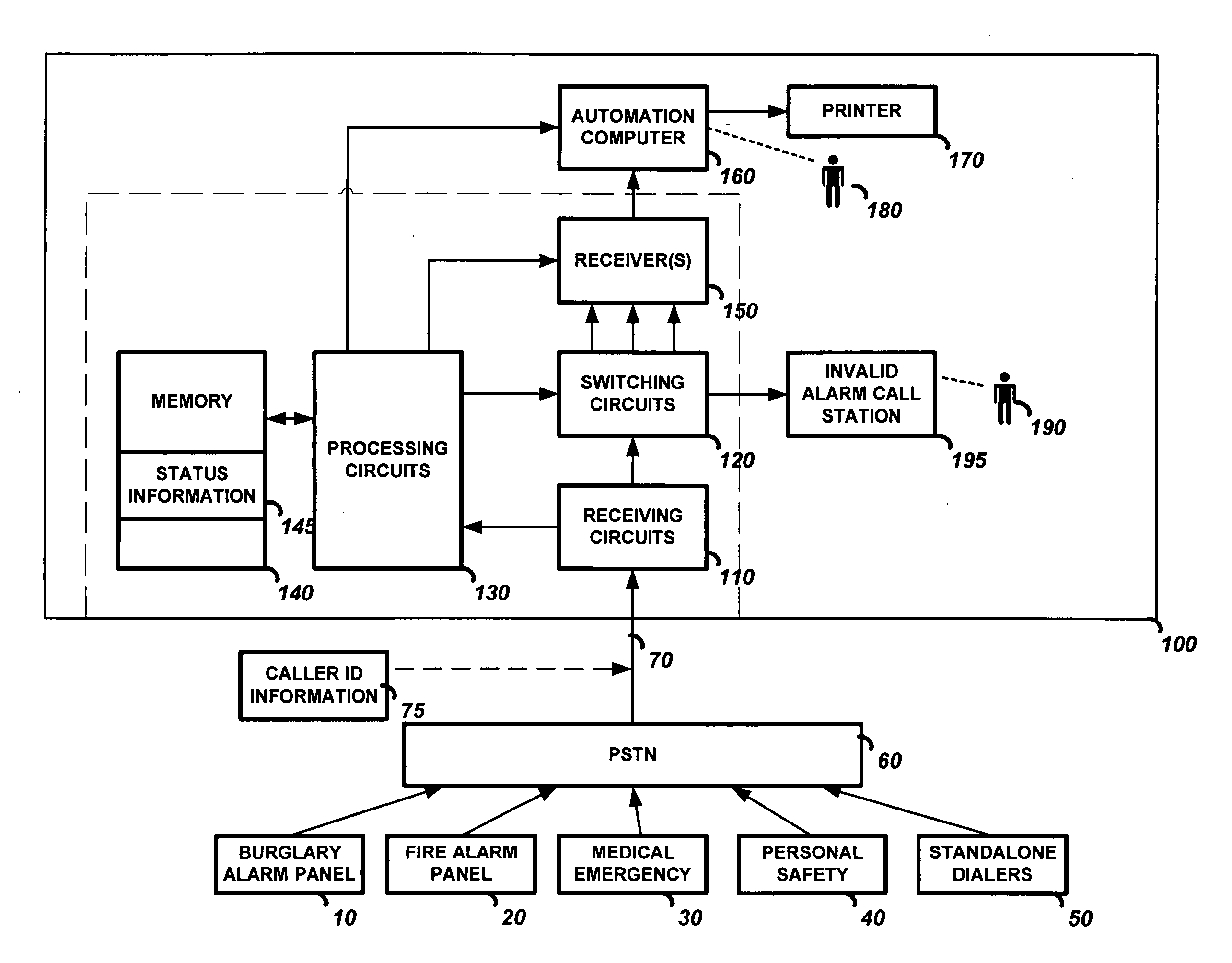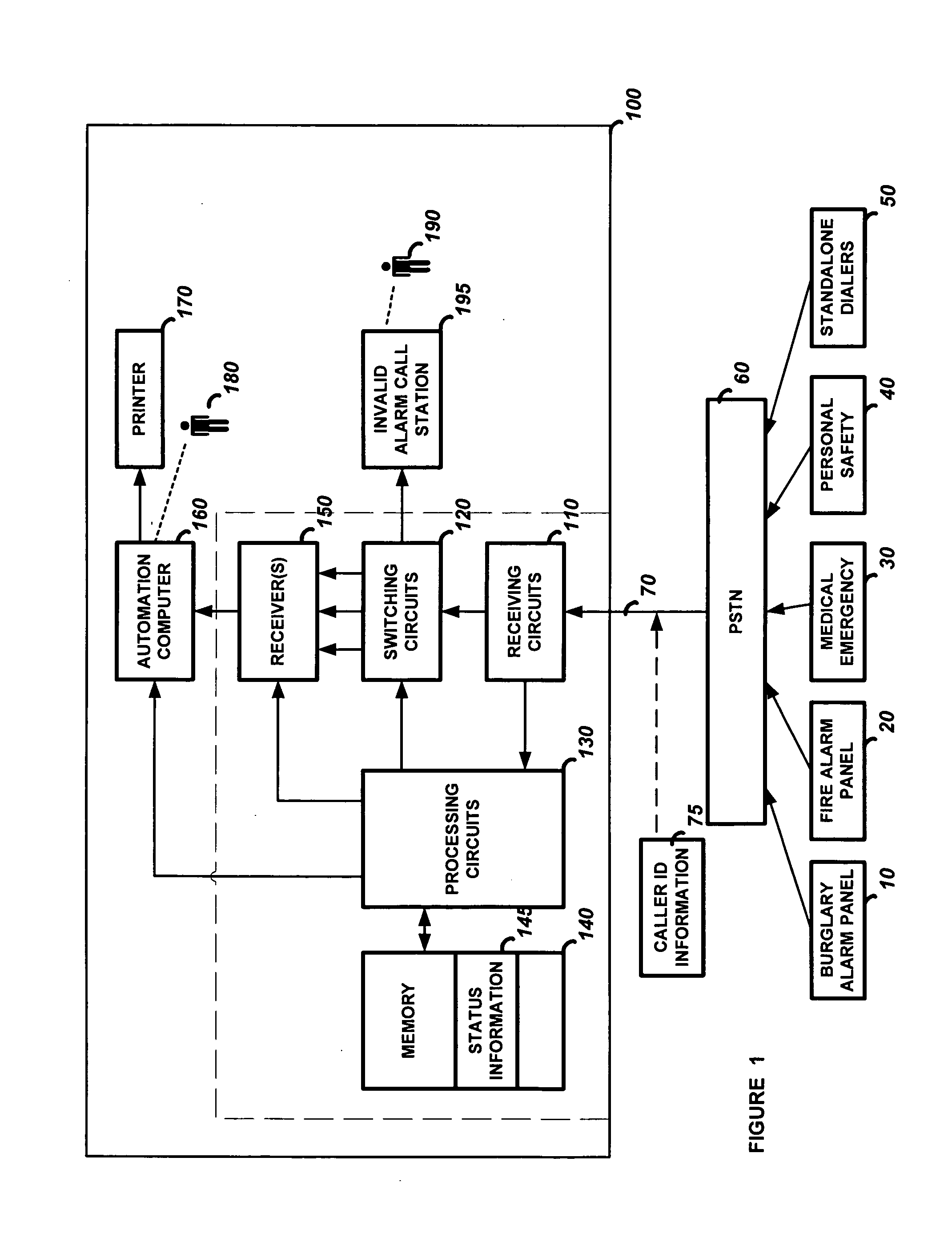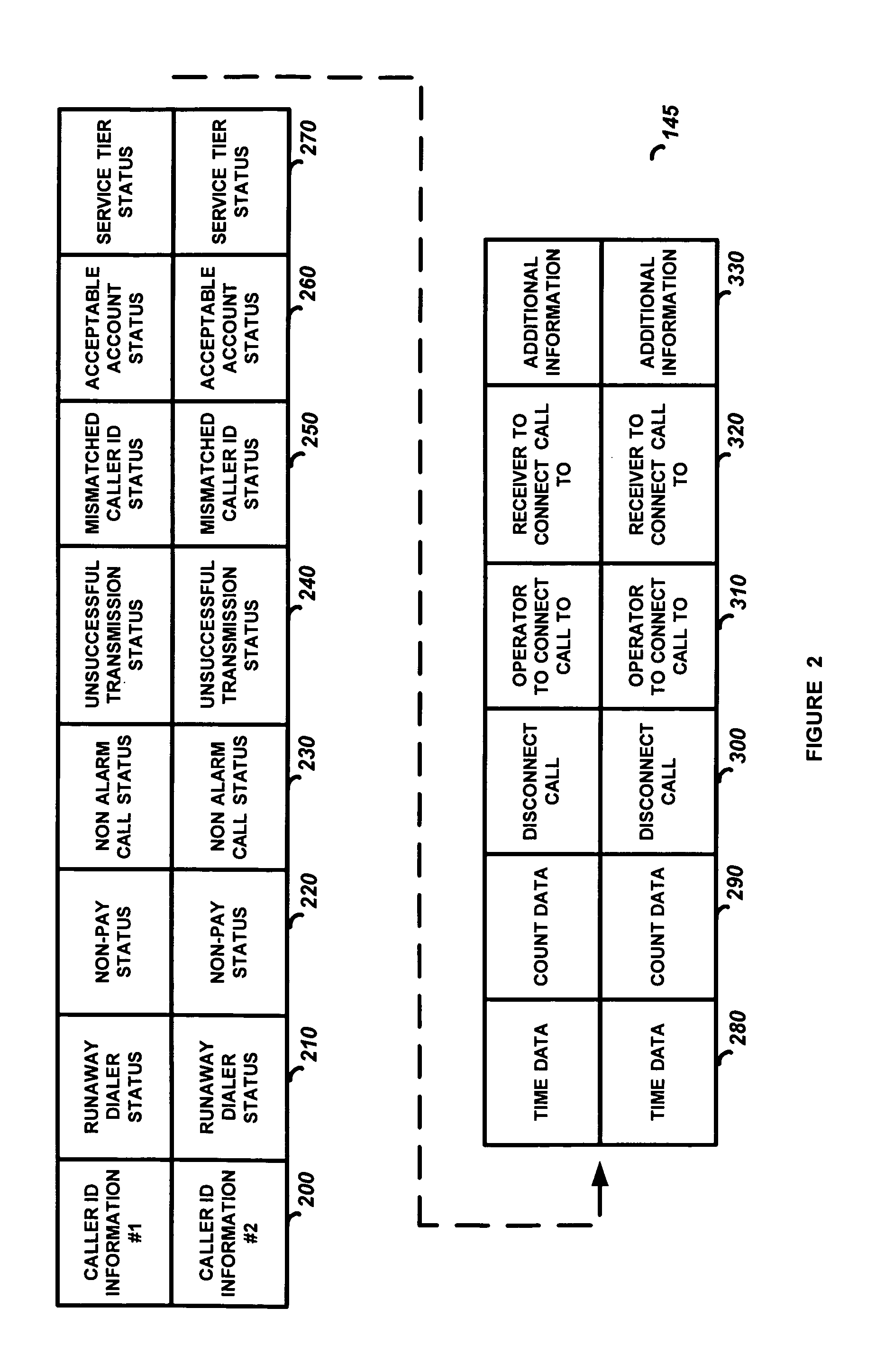Central monitoring station with method to process call based on call source identification information
a central monitoring station and call source technology, applied in the field of security systems, can solve problems such as the disconnecting of calls of monitoring stations, and achieve the effect of increasing the efficiency of the alarm answering process
- Summary
- Abstract
- Description
- Claims
- Application Information
AI Technical Summary
Benefits of technology
Problems solved by technology
Method used
Image
Examples
first embodiment
[0022]FIG. 2 is a diagram of a section of memory that shows how the status information 145 may be stored. Shown is a list of caller ID information 200 and the status bits (or bytes) 210-330 associated with each caller ID information 200. In the present invention only the caller ID information 200 is stored in memory 140. The status bits 210-330 are not necessary because, in this simplified embodiment, all the alarm systems whose caller ID information 200 has been stored in memory 140 have been previously determined to be invalid (likely a runaway dialer or a non-alarm call) which will cause its telephone calls to be disconnected by the receiving circuits 110 until the memory 140 is reprogrammed. That is, the mere fact that the caller ID is stored in memory (with no other status detail as in the next described embodiments) indicates there is a problem with the calling alarm system. For example, in order to disconnect an invalid alarm call, the call would likely be answered and then i...
second embodiment
[0023] In the present invention the caller ID information 200 and some of the status bits 210-330 will be stored in memory 140 when it has been determined that a particular alarm system has a problem. In this embodiment the call may be disconnected by the receiving circuits 110 or may be transferred by the switching circuits 120 depending on the stored status information 145. The memory 140 may be programmed with the caller ID information 200, the runaway dialer status bit 210 set and disconnect call bit 300 set. In this case a call by the alarm system with this caller ID information 200 will be disconnected by the receiving circuits 110. The memory 140 may be programmed with the caller ID information 200, the non-paying subscriber status bit 220 set and the receiver to connect the call to byte 320 programmed. In this case the alarm call will be transmitted to the receiver 150 whose address is programmed in the receiver byte 320, and the monitoring operator 180 will answer the alarm...
third embodiment
[0027]FIG. 5 is a flowchart of the present invention. In this embodiment the central monitoring station 100 receives a telephone call which is detected by receiving circuits 110. The receiving circuits 110 read the caller ID information 75 and the processing circuits 130 look for a match between the received caller ID information 75 and the caller ID information 200 stored in memory 140. If a match is not found, the processing circuits 130 cause the switching circuits 120 to connect the call to the invalid alarm call station 195. The business operator 190 will determine if the status information 145 should be programmed into memory 140. If there is a match, the processing circuits 120 read the status bits 210-330 associated with the caller ID information 200. If the processing circuits 120 determine the call is a valid alarm call, the processing circuits 130 cause the switching circuits 120 to connect the call to the receiver 150 and transmit the status information 145. The status i...
PUM
 Login to View More
Login to View More Abstract
Description
Claims
Application Information
 Login to View More
Login to View More - R&D
- Intellectual Property
- Life Sciences
- Materials
- Tech Scout
- Unparalleled Data Quality
- Higher Quality Content
- 60% Fewer Hallucinations
Browse by: Latest US Patents, China's latest patents, Technical Efficacy Thesaurus, Application Domain, Technology Topic, Popular Technical Reports.
© 2025 PatSnap. All rights reserved.Legal|Privacy policy|Modern Slavery Act Transparency Statement|Sitemap|About US| Contact US: help@patsnap.com



